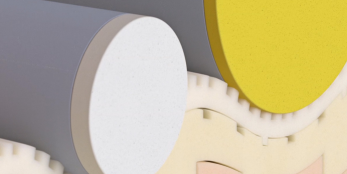Before working with this product, you must read and become familiar with the available information regarding its risks, proper use, and safe handling. This information is provided in various formats, including the current Safety Data Sheet (SDS) and product label. SDS can be accessed via the following link:
Safety Data Sheets (SDS) for Covestro products | Covestro
For further questions, please use the contact information provided on this technical data sheet.
Product description
Desmodur® CD-S is a modified isocyanate based on diphenylmethane-4,4'-diisocyanate.Solvent-free liquid which is slightly yellowish and of low viscosity at room temperature and crystallizes at lower temperatures.
Form supplied
Solvent-free liquid which is slightly yellowish and of low viscosity at room temperature and crystallizes at lower temperatures.
Sampling
Moisture access should be prevented when taking product samples.
Specification
| Property | Test Condition | Value | Unit | Standard |
|---|---|---|---|---|
| NCO | 29,0 - 30,0 | % | MDI-01-01 | |
| Viscosity | 25 °C | 20 - 50 | mPa*s | MDI-01-02 |
| Hydrolyzable chlorides | (Cl) | max. 50 | mg/kg | MDI-01-04 |
Typical Values
| Property | Test Condition | Value | Unit | Standard |
|---|---|---|---|---|
| Density | 20 °C | 1,217 | kg/l | EG A.3 / DIN 51 757 |
| Phenyl isocyanate content | max. 10 | mg/kg | MDI-01-09 | |
| Vapor pressure at 20 °C | (MDI) | < 0,00001 | mbar | EG A.4 |
| Flash point | > 250 | °C | EG A.9 / DIN ISO 2719 | |
| Pour point | - 24 | °C | EG A.1 / DIN ISO 3016 |
Storage
- Storage in original sealed Covestro container. - Recommended storage temperature: 20 - 25 °C. - Protect from moisture, heat and foreign material. General information: The product is moisture-sensitive and should therefore always be stored in tightly sealed original containers. Prolonged storage at temperatures above 25 °C results in a reduction in quality as the product becomes increasingly cloudy due to the deposition of low-solubility sediment (dimer formation). If the recommended storage temperature is exceeded for a long period (especially if the temperature of the product rises to above 50 °C), or if the recommended shelf life is exceeded, a chemical reaction may take place. In addition to a reduction in the NCO content and an increase in viscosity, carbon dioxide in particular may be generated. The resultant increase in pressure may cause the container to swell or burst. Storage at above 25 °C considerably shortens the shelf life. Storage at below 20 °C results in crystallization. The product should under no circumstances be stored in crystallized form as this will promote the formation of insoluble dimers and it will no longer be possible to melt the product completely. Delivered product should be spot-checked for crystallization, and cooling to below 20 °C must be avoided. If the product has been transported or stored below 20 °C for a short time, the material must immediately be melted at 60 - 70 °C. The melting point and the time required for this should not be exceeded as this also significantly promotes dimer formation. The entire container contents must be melted and homogenized before the container is immediately sealed and cooled to the recommended storage temperature. There is no risk that quality will be affected should the product have crystallized briefly, but it can be expected that the shelf life will be reduced. The melted material should be used as soon as possible.Warning : If the recommended storage temperature is exceeded for a long period (especially if the temperature of the product rises to above 50 °C), or if the recommended shelf life is exceeded, or if the product comes in contact with water or bases such as amines, alkalis or metal compounds, a chemical reaction may take place. In addition to a reduction in the NCO content and an increase in viscosity, carbon dioxide in particular may be generated. The resultant increase in pressure may cause the containers to swell or burst. Consequently, if the product is mixed with other components or processed into a prepolymer, it is advisable to check the shelf life of the mixture or prepolymer.
Storage time
Covestro represents that, for a period of six months following the day of shipment as stated in the respective transport documents, the product will meet the specifications or values set forth in section "specifications or characteristic data" above, what ever is applicable, provided that the product is stored in full compliance with the storage conditions set forth in and referenced under section "storage" above and is otherwise handled appropriately.The lapse of the six months period does not necessarily mean that the product no longer meets specifications or the set values. However, prior to using said product, Covestro recommends to test such a product if it still meets the specifications or the set values. Covestro does not make any representation regarding the product after the lapse of the six months period and Covestro shall not be responsible or liable in any way for the product failing to meet specifications or the set values after the lapse of the six months period.
Processing
Complete exclusion of moisture is vital during compounding, transfer, etc., as even extremely small traces of moisture have an adverse effect on the shelf life. It must be ensured that the containers - including empty ones - are always tightly sealed. In particular, the product should never be allowed to come into contact with water, which reacts with Desmodur® CD-S to form polyureas with liberation of carbon dioxide. Contact with water in any form (damp containers, water-containing solvents, moist air) must therefore be prevented during storage, transfer and processing of Desmodur® CD-S. Failure to do so may lead to a dangerous build-up of pressure in tanks and containers due to the evolution of carbon dioxide. In addition, polyureas forming in Desmodur® CD-S may cause the deposition of solids, leading to blockages and faults in filters, pumps and pipelines of the processing plant.If Desmodur® CD-S comes into contact with bases such as amines, alkalis or metal compounds, chemical reactions may occur. As a result, in addition to a reduction in the NCO content, an increase in viscosity and the precipitation of solids, carbon dioxide in particular may be generated, leading to an increase in pressure inside sealed containers.Consequently, if Desmodur® CD-S is mixed with other components or is processed into a prepolymer, it is advisable to check the shelf-life of the mixture or prepolymer.
Health and Safety Information
Disclaimer
Responsibility and Liability
The use of Covestro products, technical assistance, and information (regardless of how provided) is outside Covestro’s control and is solely the responsibility of the customer. The customer must conduct adequate testing to determine the suitability of products for its intended use, including but not limited to technical, health, safety, and environmental aspects. Unless otherwise agreed in writing, all products are sold exclusively under Covestro’s standard conditions of sale, which prevail in case of conflict and are available upon request.
The terms and conditions of sale and delivery are available via the following link:
https://order.covestro.com/covestrostorefront/saleConditions
All information is provided “as is” without warranties, express or implied, including merchantability or fitness for a particular purpose, and is subject to change without notice. To the maximum extent permitted by law, Covestro disclaims, and the customer assumes all liability for losses, damages, or claims arising out of use of Covestro products, technical assistance, or information. Any statement or recommendation not expressly contained in Covestro documentation is unauthorized and shall not bind Covestro. Nothing herein shall be construed as encouraging or recommending the use of any product in conflict with any claim of any patent. No license is implied or in fact granted under the claims of any patent.
Restrictions on Regulated Applications
This product is not intended for use in regulated applications such as agriculture, cosmetics, drinking water contact, food contact, medical products (e.g., medical devices), toys, or similar uses subject to specific regulatory requirements. Prior written approval from Covestro is required before this product may be used in any regulated application. The customer is solely responsible for ensuring compliance with all applicable laws and determining product suitability. Covestro disclaims all liability and warranties for unauthorized regulated uses.
Typical Value
The values provided are typical only and do not represent binding specifications. Unless expressly confirmed in a written contract, these values are not part of the contractual quality agreement and must not be relied upon as a warranty or guarantee of product performance.
Sample
Samples provided by Covestro are intended solely for evaluation and testing purposes by the customer and may not be used in commercial applications, resold, transferred to third parties (except qualified testing service providers acting on behalf of the customer), reverse engineered, modified, or used in any manner not explicitly authorized in writing by Covestro. Samples are provided ‘as-is’ without any warranties, express or implied, including fitness for a particular purpose. Customers are solely responsible for ensuring safe handling, regulatory compliance, and suitability of the material for their intended evaluations. Covestro disclaims all liability for damages or losses arising from the use of samples.
Contact Information
Please use our contact form or contact us directly by sending an e-mail to technical-datasheets@cx.covestro.com .








